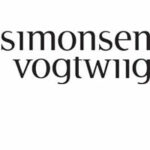-
Does your jurisdiction have an established upstream oil and gas industry? What are the current production levels and what are the oil and gas reserve levels?
Yes, since the first discovery of oil in 1907 in the Province of Chubut the oil and gas activity has developed until becoming an established industry, including the upstream, midstream, and downstream sectors. There are five producing basins in the country, the Neuquén, Golfo San Jorge, Cuyana, Austral and Northwest basins.
During the last 117 years, the upstream industry went through several schemes and systems, from a monopolistic ownership of the hydrocarbons by the state-owned company Yacimientos Petrolíferos Fiscales S.E. (predecessor of YPF S.A.) to the deregulation years during which YPF was privatized and the current scenario, in which YPF is a stock company governed by the General Companies’ Law No. 19,550 and listed in the stock exchange, in which the Argentine federal state and the hydrocarbons producing companies own 51% of the shares, that coexist and compete with several local and international companies that own exploration and production rights in onshore and offshore blocks.
During 2024 the country produced an average of 110 million cubic metres /day of oil and 137 million cubic metres/day of natural gas. In recent years the production of unconventional hydrocarbons has been increasing steadily, in contrast to the decreasing production of conventional oil and gas from mature fields. The country’s shale oil recoverable resources are the fourth largest in the world, while its shale gas resources are the second largest worldwide, with the Vaca Muerta formation being the most promising and prolific shale play so far. The production of unconventional oil amounts to 56% of the total oil production, while the production of unconventional gas amounts 63% of the total gas production.
According to the latest information posted by the Secretariat of Energy, the country’s registered reserves of crude oil were 477,270 million cubic metres (proved), 238,450 thousand cubic metres (probable), 181,279 thousand cubic metres (possible) and 774,366 thousand cubic metres (resources), while its reserves of natural gas were 487,472 million cubic metres (proved), 250,725 million cubic metres (probable), 191,175 (possible) and 909,158 million cubic metres (resources).
-
How are rights to explore and exploit oil and gas resources granted? Please provide a brief overview of the structure of the regulatory regime for upstream oil and gas. Is the regime the same for both onshore and offshore?
Exploration and production rights are granted by the issuance of superficial survey permits (used lately for offshore operations, rarely used onshore), exploration permits and exploitation concessions by the relevant province or by the national state, depending on where the hydrocarbons are located. Exploration and production rights can also be enjoyed by way of association agreements with state-owned provincial companies under which the state-owned company, as owner of the exploration and exploitation rights, make such rights available to the joint venture, while the private company undertakes the operation of the field, assumes all exploration costs and risks and owns its share (typically a 90%) of the production.
In general terms, the superficial survey, exploration permits and exploitation concession regime is the same for both onshore and offshore, although there are certain differences, such as, (i) longer terms for offshore superficial survey permits, (ii) longer exploration and exploitation terms for the offshore, if compared with conventional onshore permits and concessions, (iii) higher financial capability requirements to register as an offshore upstream company, (iv) specific environmental impact assessment and environmental license regulations applicable to offshore seismic acquisition, and (v) potential reduction of the royalty rate applicable to the production from offshore fields.
-
What are the key features of the licence/production sharing contract/concession/other pursuant to which oil and gas companies undertake oil and gas exploration, development and production?
Superficial survey permits give the permit holder the non-exclusive right to conduct exploration activity – excluding drilling of wells) within the permit area during the permit term (the maximum term is two years for onshore and eight years for offshore permits) and the exclusive right, during the term of the permit and two years thereafter, to market the data obtained.
Exploration permits give the permit holders the exclusive right to carry out exploration activity within the permit area. The exploration terms provided for by the federal Hydrocarbons Law No. 17,319 (the “Hydrocarbons Law”) are: (i) for permits with a conventional objective, a basic term of three years plus three years, plus an extension term of five years; (ii) in permits referring to offshore exploration, each of the periods of the basic term mentioned in (i) can be increased by one year; and (iii) for permits with an unconventional objective, the basic term is four years plus four years, plus an extension term of five years. The holders of exploration permits (which are granted through bidding rounds) must comply with the minimum work commitments assumed in the bids submitted (typically, acquisition and processing of seismic data during the first period and drilling of at least one exploration well during the second period) and will be able to conduct any exploration activity in addition to those commitments. The permit holders have the exclusive right to apply for an exploitation concession if they make a commercially exploitable discovery within the permit area.
Exploitation concessions can be granted through bidding rounds (on areas with proven resources), upon a request made by an exploration permit holder that made a commercially exploitable discovery or, in the case of unconventional hydrocarbons exploitation concessions and until 31 December 2028, by request made by the holder of a conventional hydrocarbons concession if the concessionaire determines that all or a portion of the field has unconventional potential. The concession terms provided by the Hydrocarbons Law are, (i) twenty-five years for onshore conventional concessions, (ii) thirty-five years for onshore unconventional concessions, and (iii) thirty years for offshore concessions. In new concessions granted after the 2024 amendment to the Hydrocarbons Law, the national or provincial executive branch, as appropriate, at the time of defining the bidding terms and conditions, may determine other terms of up to ten years above or below the terms provided for conventional, offshore and unconventional concessions, based on reasonable grounds. Concessions granted before the 2024 amendment to the Hydrocarbons Law made by Law 27,742, can be extended for an unlimited number of ten-year periods, subject to certain conditions. Concessionaires own the hydrocarbons produced from the concession area and can market them freely, subject to certain limitations (for example, exports restrictions that apply when the domestic demand is not sufficiently supplied).
Association or production sharing agreements with provincial state-owned companies are awarded through bidding rounds. Typically, the state-owned company holds a 10% interest in the contract, while the private party holds the remaining 90%. The state-owned company is the owner of the E&P rights and make them available to the joint venture while the private company undertakes the operatorship and assumes all costs and risks relating to the exploration activities.
-
Are there any unconventional hydrocarbon resources (such as shale gas) being developed and produced and is there a separate regulatory regime for those unconventional resources?
Yes, Argentina’s large unconventional hydrocarbon resources are being exploited, especially the shale oil and gas resources in the Vaca Muerta formation, with several blocks undergoing full development or pilot stages. The Vaca Muerta formation alone contains the second-largest gas reserve and the fourth-largest unconventional oil reserve in the world, with 308 trillion cubic feet of gas and 16 billion barrels of oil and condensate, respectively.
The Hydrocarbons Law, as amended by Law 27,007 in 2014, contains several provisions specifically related to unconventionals, including longer terms for exploration permits with an unconventional objective and a specific unconventional hydrocarbons exploitation concession, with a longer term than the one applicable to conventional hydrocarbon concessions. Unconventional hydrocarbons exploitation concessions can be requested by the holder of an exploration permit with an unconventional objective, upon the occurrence of a commercial discovery, or by the holder of a conventional exploitation concession, on all or a portion of the concession area, upon determining that all or a portion of the conventional concession area has unconventional potential. The law also provides that the permit or concession holder asking for an unconventional hydrocarbon exploitation concession can request to annex a field adjacent to the unconventional concession area when there is geological continuity.
-
Who are the key regulators for the upstream oil and gas industry?
The main federal governmental body involved in energy regulation is the Secretariat of Energy, answerable to the Ministry of Economy. The Secretariat of Energy has four undersecretariats: Electric Energy, Liquid Fuels, Gaseous Fuels and Energy Transition and Planning. The Undersecretariats of Liquid Fuels and Gaseous Fuels are the secretariat’s subdivision specifically devoted to oil and gas.
At a provincial level, each oil and gas-producing province has its own oil and gas regulators. Provincial regulators are governed by the Federal Hydrocarbons Law and by provincial legislation and regulations. In some provinces, the local legislation includes provincial hydrocarbons laws that are mostly aligned with the provisions of the Hydrocarbons Law, which provides the basic principles and substantial rules governing the oil and gas activity.
-
Is the government directly involved in the upstream oil and gas industry? Is there a government-owned oil and gas company?
The government is not involved in the oil and gas industry directly, although YPF S.A. (the largest producer) is controlled by the national state which together with the oil producing provinces, hold 51% of its shares. The provinces and the national government act jointly as if they were one shareholder, following the leading role of the national government. The remaining 49% of the shares are listed in the Buenos Aires Stock Exchange and also traded in international stock exchanges, like New York, and privately owned. YPF S.A. is a stock company governed by the General Companies Law No. 19,550.
The federal state owns 100% of Energía Argentina S.A. (ENARSA, formerly Integración Energética Argentina S.A.), a company involved in the commercialization of hydrocarbons (gas imports mainly) and in the midstream (transportation) sector.
Some provinces have state-owned oil and gas companies that have been assigned certain upstream assets which, in most cases, are explored and exploited through association agreements with private companies, as described above.
-
Are there any special requirements for, or restrictions on, participation in the upstream oil and gas industry by foreign oil and gas companies?
Foreign companies willing to act as upstream companies in Argentina have to register a branch or a subsidiary in the country, which branch, or subsidiary shall be subject to the rules generally applicable to all upstream companies, either controlled by local or foreign shareholders.
The branch or subsidiary will need to register with the national and relevant provincial upstream companies’ registrars. In order to register, certain financial and technical (for companies wishing to register as operators) capability requirements must be met. Currently, the financial capability parameter to be met in order to register with the national registrar (as set forth in Disposition No. 335/19) is, (a) a net worth of at least, (i) the amount of AR$ equivalent to 27,000 barrels of crude oil for companies involved (or willing to be involved) in onshore activity; or (ii) the amount of AR$ equivalent to 270,000 barrels of crude oil for companies involved (or willing to be involved) in offshore activity; in any case considering the average price obtained from domestic sales of oil produced in Argentina for the previous calendar year, as informed by the Undersecretariat of Hydrocarbons on its web page. Both the financial and technical capability requirements can be fulfilled with guarantees and technical assistance commitments, respectively, typically provided by affiliate companies.
It is worth mentioning that companies that directly or through an affiliate perform activities in the Argentine continental shelf (including the Malvinas / Falkland Islands area) without authorisation from the Argentine government cannot register as an oil company in Argentina, and thus cannot hold an upstream interest or be an operator.
-
What are the key features of the environmental and health and safety regime that applies to upstream oil and gas activities?
At the national level the hydrocarbons sector is governed by regulations that apply generally to any industry, containing minimum environmental protection standards, such as Law 25,675 (General Environmental Law) and Law 24,051 (Hazardous Waste Law), and by general regulations and minimum standards specifically applicable to hydrocarbon activities issued by the relevant enforcement authorities (Secretariat of Energy and Undersecretariat of Environment).
The key features of the applicable environmental, health and safety regime include:
(i) The submission of a prior environmental study before drilling the first exploratory well and commencing development of the reserves, (ii) the annual monitoring of works and tasks, and (iii) the duty to observe certain environmental guidelines in the exploration and exploitation of hydrocarbons (Resolution SE No. 105/92);
(ii) The environmental studies and annual monitoring reports must comply with certain structure and scope, as described in Resolution SE No. 25/04. The environmental studies include four phases: an initial environmental status; an identification and characterisation of environmental effects and prioritisation of environmental impacts; an environmental impact mitigation plan; and a monitoring plan.
(iii) Exploration and exploitation activities in the continental shelf subject to federal jurisdiction (beyond 12 nautical miles from the coastline) are governed by certain specific rules contained in Joint Resolution No. 3/19, issued by the Secretariat of Energy and the Undersecretariat of Environment. Every holder of a superficial inspection permit, exploration permit or exploitation concession willing to carry out an exploration or exploitation Project, in the terms of Annex II of the resolution, shall comply with certain environmental impact proceedings and obtain an Environmental Impact Statement to be issued by the Undersecretariat of Environment.
(iv) Whenever an environmental incident occurs, contingency plans must meet the guidelines provided under Resolution SE No. 342/93, and the enforcement authority must be informed within the deadlines and in the manner established by Resolution SE No. 24/04.
(v) Venting of gas to the atmosphere is subject to certain guidelines and mandatory limits set forth in Resolution SE No. 143/98.
(vi) Storage of crude oil and by products in tanks is subject to safety and maintenance regulation contained in Decree No. 10877/60, which describes the active and passive defences to be implemented in the facilities, and Resolution SE No. 785/05, which established a Programme for the Control of Spills from Surface Storage Tanks.
The rules contained in federal laws and regulations can be supplemented with local regulations, provided that they do not overstep the principle of federal law pre-eminence established by Section 31 of the National Constitution. In this regard, provincial regulations have been passed in connection with several environmental matters, such as a gaseous emissions control regime, subterranean water exploitation regime, groundwater exploitation regime, pressurised devices control regime, etc.
-
How does the government derive value from oil and gas resources (royalties/production sharing/taxes)? Are there any special tax deductions or incentives offered?
The government take in connection with oil and gas resources includes a surface fee, calculated on the relevant exploration permit or exploitation concession area, and royalties, calculated as a percentage of the production. Both the surface fee and the royalty are paid to the relevant jurisdiction (province or national state) where the field is located.
The surface fee is payable annually, in advance, during the month of January. The fee is calculated by each square kilometre of the permit or concession area and the amount to be paid varies for each period during the exploration phase.
The applicable maximum surface fees, as set forth in Decree No. 771/20, are the amounts equal to the value of, (i) 0.46 barrels of crude oil per square kilometer, during the first exploration period, (ii) 1.84 barrels of crude oil per square kilometer during the second exploration period, (iii) 32.22 barrels of crude oil per square kilometer during the extension period of the exploration phase, (iv) 8.28 barrels of crude oil per square kilometer during the exploitation period. The price of crude oil to be used for the calculation is the average domestic price for the first semester of the previous year, published by the Secretariat of Energy on its website.
Royalties are a percentage of the hydrocarbons produced at wellhead (Section 59 Hydrocarbons Law). The Hydrocarbons Law, as amended in 2024 by Law 27,742, provides that the royalty to be paid to the relevant granting government shall be a percentage of the production, to be determined in the granting rules. The royalty payable under exploration and production licences granted before the 2024 amendment to the Hydrocarbons Law shall be the one established in the relevant granting instrument (typically, a 12% royalty on hydrocarbons produced under exploitation concessions, and a 15% royalty on hydrocarbons produced under an exploration permit). Royalties are paid on a monthly basis.
Considering particular circumstances relating to productivity issues, location and especially unfavourable technical and economic characteristics, in tertiary production (enhanced oil recovery and improved oil recovery), and in extra heavy oil and offshore projects, the royalty can be reduced by up to 50%.
Royalty shall be paid in cash, unless the relevant province or national state requests to be paid in kind, and provided the producer is ensured that hydrocarbons will be received on a reasonably permanent basis. Therefore, royalty is calculated on the net price obtained for the production.
The royalty provided in the law shall be the only government take calculated on the production.
In concessions granted before the 2024 amendment to the Hydrocarbons Law, Government take can also adopt the form of extension bonuses, payable when a concession is extended, which is subject to certain cap provided for in Law 27,007, and contributions to social programs required by bidding and concession extension specifications.
-
Are there any restrictions on export, local content obligations or domestic supply obligations?
Articles 6 and 7 of the Hydrocarbons Law (as amended by Law 27,742) set forth, as a basic principle, that holders of exploration permits and exploitation concessions shall be able to freely export the hydrocarbons produced, subject to the Secretariat of Energy not raising an objection, which objection shall, (i) consider the exporter’s access to proved reserves, (ii) be made within 30 days after being informed of the intended export, and (iii) be based on detailed technical or economic reasons related to the security of supply to the domestic market. Should an export be partially objected, the exporter shall be able to supply the objected portion of the intended export with imported hydrocarbons.
Decree 1057/24, which regulates in further detail the amendments to the Hydrocarbons Law contained in Law 27,742, establishes certain requirements to be met by the exporter during the procedure to obtain an export permit and provides that the Secretariat of Energy shall amend, as appropriate to align them with the principles of the amended articles 6 and 7 of the Hydrocarbons Law, the existing procedures applicable to the obtainment of export permits. Pursuant to these existing procedures, crude oil exports have to be offered to the domestic market first in accordance with the procedure provided for in Decree No. 645/2002 and Ministry of Energy and Mining Resolution No. 241/2017 (applicable to exports transported by any means other than pipelines) and Secretariat of Energy Resolution No. 175/2023 (applicable to exports transported by pipelines). Exports of gas require governmental approval in accordance with Section 3 of Law 24,076 and Secretariat of Energy Resolution No 360/21 (as amended by Resolution No. 774/2022). The exports contemplated in such resolution are (i) firm exports, including, (a) Plan Gas.Ar firm exports (firm exports that the participants in the Plan Gas.Ar promotional regime are entitled to apply for), (b) firm exports derived from additional injections during the winter within the Plan Gas.Ar, and (c) firm exports of surplus production in a basin, (ii) interruptible exports, (iii) operational exchanges (with a subsequent obligation to reimport the same volumes that have been exported), and (iv) assistance agreements. Volumes for which an export authorisation is required must be made available to ENARSA (state-owned company that administers the imports of natural gas and LNG), CAMMESA (state-controlled company that administers the wholesale electricity market), power generators, distributors, sub-distributors and to the natural compressed gas sector, who will have a preferential right to purchase the whole volumes contemplated in the authorization request under the same terms and conditions, provided the natural gas purchased is used to supply domestic demand. Authorization requests for firm Plan Gas.Ar exports shall have priority vis a vis other authorization requests.
As regards local content, article 71 of the Hydrocarbons Law provides that companies performing jobs regulated by such law shall prefer to hire nationals and, particularly, residents of the region where the works shall be performed, and that the proportion of nationals employed by each concessionaire or permit holder shall not be less than 75%. A similar provision is included in article 94 of Neuquén Hydrocarbons Law No. 2,453. In practice, exceptions to the abovementioned rule are accepted in connection with specialised workers that are not available in Argentina or in the region where operations are conducted.
The Province of Neuquén has issued regulations that establish an obligation to acquire a minimum of 60% of the contractual amount from companies based in Neuquén, which is calculated on an annual basis, in respect of each item or type of activity. This preference must be observed if the economic offer submitted by a Neuquén company is up to 9% (for companies categorized as “Range A”) or 6% (for companies categorized as “Range B”) greater than the best offer submitted by the other companies, provided that the Neuquén company accepts to reduce its prices to match the best offer received (Neuquén Law No. 3338). The Neuquén based suppliers will be categorized as Range A or Range B, depending on certain local content parameters met by them. If offers made by a Range A supplier and a Range B supplier qualify for the preference, the offer submitted by the Range A supplier shall prevail.
-
Does the regulatory regime include any specific decommissioning obligations?
Yes, the rules and procedures applicable to the abandonment of wells are set forth in Resolution SE No. 5/96. Per this resolution, operators shall report, on an annual basis, the decommissioning works performed in the past year and those to be performed in the following year. Four years before the expiration of the respective concessions, or as from the date of relinquishment of all or part of an exploitation block, the operator must submit a technical and economic study explaining the reasons why the abandonment of each inactive well could be inconvenient. The resolution also contains certain recommended definitive abandonment techniques.
ENARGAS (the national gas regulator) resolutions NAG 100 and NAG 153 establish technical rules applicable to the abandonment of gas pipelines and ancillary facilities. The abandonment of these facilities requires prior consent from ENARGAS, which will evaluate whether there is a general interest in keeping the facilities operative.
-
What is the regulatory regime that applies to the construction and operation of offshore and onshore oil and gas pipelines?
Producers of hydrocarbons – either liquid or gaseous – have a right, under the Hydrocarbons Law, to build transportation facilities to transport the production from the producing fields to the trunk pipelines transportation system and, when the pipeline extends beyond the limits of the relevant exploitation concession, they must obtain a transportation authorisation (formerly a transportation concession) granted by the federal or provincial states, as applicable. The obtainment of a transportation authorisation is optional if the pipeline does not run beyond the limits of the relevant concession area. These authorisations shall be valid for a term equal to the terms of the exploitation concession to which the authorisation is associated. In order to obtain a transportation concession, the companies must comply with the applicable technical, environmental and safety requirements.
Transportation authorisations may also be granted to, (i) owners of facilities for the conditioning, separation, liquefaction or process of hydrocarbons for their industrialisation through any other processes, (ii) facilities devoted exclusively for the transportation of hydrocarbons (authorisations granted to “pure” midstreamers, not associated with a specific exploitation concession), and (iii) owners of refining compounds or storage facilities related to natural gas liquefaction plants, or facilities for the storage of third parties’ natural gas. These authorisations do not need to be granted through tender procedures and are not subject to a specific term.
The transportation of natural gas through the trunk pipelines system is made under natural gas transportation licences granted under Law 24,076 and shall be obtained by a public bidding process. As an exception to this general rule, the state-owned company IEASA was granted directly, through an executive order, a natural gas transportation concession on a new pipeline between the Province of Neuquén and the Province of Buenos Aires.
The transportation of natural gas from the trunk pipelines to consumers is carried out by distributors that have been granted distribution licenses by the federal government, and each of these companies has a monopoly within the area of its license.
Transportation concessions granted before the 2024 amendment o the Hydrocarbons Law by Law 27,742, shall continue to be governed by the rules in force as of the time in which they were granted. Therefore, some of those concessions shall be valid for certain terms (25 or 35 years) and the concessionaires shall have a right to request one, or an unlimited number (depending on the specific regulations applicable to each concession), of 10-year extensions.
-
What is the regulatory regime that applies to LNG liquefaction plants and LNG import terminals? Are there any such liquefaction plants or import terminals in your jurisdiction?
Although there is not a specific and comprehensive regulatory regime for LNG, there are regulations applicable to regasification and liquefaction, and to receiving terminals.
The Hydrocarbons Law, as amended in 2024 by Law 27,742 and its supplementary Decree No. 1057/24, provides that the federal government shall grant permits for the construction and operation of liquefaction and regasification plants for export or import of LNG. The terms and conditions applicable to these permits shall be detailed in regulations to be issued by the Secretariat of Energy.
Law 24,076 (Federal Gas Law), as amended by Law 27,742, contains a provision whereby the export of natural gas will be regulated without the condition that domestic supply has been safeguarded and a regulation specifically applicable to firm LNG exports authorisations, that will be granted for 30 years.
Res SE No. 338/12 sets forth, (i) the rules applicable to the location of port terminals to be used for LNG operations and certain environmental requirements applicable thereto; (ii) technical regulations applicable to the design and construction of port infrastructure to be used in LNG operations; and (iii) safety requirements applicable to the interface between methane vessels and terminals. The resolution provides that terminals shall obtain certificates in connection with the design, equipment and construction or assembly thereof, issued by a classification society member of the International Association of Classification Societies Ltd., and sets forth an annual HSE monitoring regime applicable to such terminals.
ENARGAS Resolution No. 722/19 approved the Rules Applicable to the Storage of Natural Gas which includes, within the category of gas storage companies, the onshore regasification and liquefaction terminals, as well as onshore LNG storage facilities. These rules provide that all such companies must register themselves as well as their facilities with a specific registrar (the Gas Storage Registrar of the Argentine Republic) in order to carry out their activities (including liquefaction and regasification). Each company willing to register shall provide evidence showing that it is a skilled and experienced operator, or that it has hired an operator that meets such requirements. The resolution also establishes that the HSE regulations contained in Resolution SE No. 338/12 shall be of subsidiary application.
ENARGAS technical rules NAG-501, approved by ENARGAS Resolution No. 235/18, contains a set of minimum safety rules for onshore LNG storage facilities.
There are no permanent regasification or liquefaction terminals in Argentina yet. Two projects for the liquefaction of natural gas and export of LNG have been launched recently. One is a project, owned by Pan American Energy and Golar, for the liquefaction of natural gas using one, at an initial stage, and two, in a second stage, floating liquefaction facilities, together with an offshore LNG export terminal and ancillary onshore facilities. The project, that is already being executed by the parties, contemplates the liquefaction, initially, of 24 million tons per year and will demand an investment of more than US$ 2 billion. The other project, owned by YPF and Shell, is a larger one (initially, 10 million tons per year) that includes the construction of an onshore liquefaction plant and an export terminal, that will also include the construction of a 548 kilometres dedicated gas pipeline. This project is going through its initial stage, with an MOU having been signed by the parties in late 2024.
Law 27,742 created an incentives regime for large investments (see 18 below) that applies to LNG projects.
-
What is the regulatory regime that applies to gas storage (not LNG)? Are there any gas storage facilities in your jurisdiction?
Gas storage is one of the activities included in Law 24,076 and thus subject to the general provisions contained therein and to the jurisdiction and control of ENARGAS. However, Law 24,076 does not contain specific regulations applicable to gas storage. Decree No. 1738/92, that regulates and supplements the general principles and rules contained in Law 24,076, provides that gas storage shall be subject to the regulatory powers and monitoring of ENARGAS in connection with HSE issues only. Resolution No. 722/19 mentioned above in 13, which approved the Rules Applicable to the Storage of Natural Gas applies to LNG and non-LNG storage. Non- LNG storage categories include storage of compressed natural gas and pressured natural gas, as well as subsoil storage in depleted fields, salt caverns, aquifers and coal bed methane. Then, the obligation to register with the Gas Storage Registrar, meet the operatorship requirements, comply with the information regime and the subsidiary application of the HSE rules contained in Resolution SE No. 338/12 shall apply to non-LNG storage.
Gas transportation facilities and terminals include storage facilities. In 2020 CGC began to operate the first subsoil storage project in the country, in the Province of Santa Cruz.
The Hydrocarbons Law, as amended in 2024 by Law 27,742, incorporated a new licence for underground storage of natural gas in depleted wells. Technical aspects applicable to this new licence shall be regulated by ENARGAS. These licences (called “authorisations” by the law) are not subject a specific term and allow the holder of the licence to storage its own, as well as third parties’ natural gas at prices that can be freely negotiated.
-
Is there a gas transmission and distribution system in your jurisdiction? How is gas distribution and transmission infrastructure owned and regulated? Is there a third party access regime?
Yes, there is. The natural gas trunk transmission and distribution systems are regulated by Law 24,076 and several supplementary regulations, and subject to the jurisdiction of the ENARGAS. Transmission through the trunk system and distribution are carried out by private companies holding licences granted by the federal government. The law keeps transmission and distribution separate and prohibits vertical integration between both sectors.
Producers, operators of storage facilities, distributors and users of the transportation system that purchase gas directly from the producers are banned from having a controlling interest in the holder of a gas transportation licence. Also, producers, operators of storage facilities and transporters that purchase gas directly from producers in the same geographic area where a distributor operates are banned from having a controlling interest in such specific distributor.
The natural gas trunk transmission system is operated by two licence holders, Transportadora de Gas del Norte (TGN) and Transportadora de Gas del Sur (TGS), which are the result of the privatisation of the state-owned company Gas del Estado in the early nineties. The system has eight interconnections with transportation systems of adjacent countries, two with Uruguay, one with Brazil, four with Chile and one with Bolivia. The distribution to consumers is made through a grid comprised of eight distributors, each of them serving an exclusive area.
Transportation and distribution rates are determined in the terms of the relevant licence and adjusted or revised periodically by ENARGAS.
Transportation through the trunk pipelines system can be made under firm transportation conditions, to which end they shall reserve certain capacity for the charger requiring such firm services, or under an interruptible services condition, subject to the actual available capacity in the system. The tariffs to be paid by the users, in accordance with Law No 24,076, should allow them to bear their operational costs, taxes and amortisations, and to obtain a reasonable profit. In practice, the system has oscillated between periods of government intervention in the mechanisms applicable to establish tariffs and others in which a gradual return to market prices was favoured.
Law No. 24,076 provides that holders of licences for the transportation and distribution of natural gas must guarantee third parties open access, on a non-discriminatory basis, subject to available capacity (the capacity that has not been already committed in relation to firm transportation agreements).
-
Is there a competitive and privatised downstream gas market or is gas supplied to end-customers by one or more incumbent/government-owned suppliers? Can customers choose their supplier?
Yes, there is a competitive downstream gas market in which the natural gas produced by numerous holders of exploitation concessions (several private companies and YPF, the state-controlled stock company that competes with the rest of the market) is sold to distributors, to CAMMESA (the company that administers the wholesale electric market) and to end consumers. Residential consumers, commercial retail consumers and small industrial consumers purchase their gas from the distributors of their respective areas. Gas to supply the wholesale electric market is purchased through CAMMMESA. Industrial consumers can buy gas directly from the producers.
Domestic gas prices are a mix of regulated and market prices. Gas for power generation and distributors (who supply the priority natural gas demand) are acquired through tender processes, subject to certain maximum prices.
In late 2020 a new incentives plan for the production of natural gas, the “Plan to Promote the Argentine Natural Gas Production – Supply and Demand Scheme 2020-2024”, known as Plan Gas.Ar, was created by Decree No. 892/20. The plan consisted in a call for bids, conducted by the Secretariat of Energy, for the supply of up to 70 MMm3/day between January 2021 and December 2024. Producers could commit to supply volumes of up to 70% of their production during the previous winter season, for a price that could not exceed US$ 3.70 / MMBtu. Thereafter, new rounds for the supply of additional volumes during the cold season have been carried. The maximum price established in the latest rounds (November, 2021 and November, 2022) were US$ 3.66 / MMBtu and 3.60 /MMbtu, respectively. With the purpose of filling the capacity of the first stage of the new “President Néstor Kirchner Pipeline” between Tratayén (Province of Neuquén) and Saliqueló (Province of Buenos Aires) which construction was completed in July 2023, Executive Order No 730/22 broadened the scope of the Plan Gas.Ar and extended its term until 2028. Such executive order, supplemented by Secretariat of Energy Resolution No 770/22 and No 860/22, contemplated four rounds. The first round consisted in the extension through 2028 of the 100 MMm3/day awarded for the 2020-2024 period under round 1 of the program. The other three rounds were tenders for the supply of base and peak demand. The maximum prices for such rounds had been established in a range between US$ 3.53 / MM Btu and US$ 6.90 / MMBtu.
The industrial sector purchases gas from the producers or marketers directly at freely negotiated prices.
Articles 6 and 7 of the Hydrocarbons Law, as amended in 2024 by Law 27,742, provides, as a general principle, that hydrocarbons shall be marketed at freely negotiated prices. This will not affect contracts executed under the Plan Gas.Ar described above and may be subject to certain exception in which certain prices could be regulated.
-
How is the downstream gas market regulated?
Gas can be marketed by the holders of exploitation concessions, who own the gas extracted, and by marketers, who act as intermediates, by purchasing and selling gas produced by someone else, or by selling gas on behalf of the producer. Producers can be marketers in respect of gas produced by someone else. The exploitation concessionaires’ right to own and sell the gas produced by them is set forth in the Hydrocarbons Law. Marketing is governed, together with transportation and distribution, by Law 24,076, although marketing is not considered a public utility service. Marketers need to register with the Marketers Registrar held by the Secretariat of Energy and comply with certain information regime.
As mentioned in 16 above, the purchase of gas for power generation within the wholesale electric market is centralized by CAMMESA and not purchased directly by the generators.
Residential consumers, commercial retail customers and small industrial consumers purchase the gas, together with the transportation service, from the distributors, which purchase the gas from the producers and marketers. Large industrial consumers must purchase the fluid directly from the producers.
As regards pricing, as mentioned in 16 above, there is a mix of regulated and market prices at which natural gas is sold.
-
Have there been any significant recent changes in government policy and regulation in relation to the oil and gas industry?
The new administration, inaugurated in December 2024, adopted an approach to the economy in general, and to the oil and gas sector in particular, that was radically different from the approach taken by the previous administration, favouring free trading of hydrocarbons at freely negotiated prices.
In June 2024, the Argentine Congress enacted Law No. 27,742, commonly referred to as the Bases Law. The law aims at providing the National executive the tools to deregulate several sectors and reduce the state intervention in the economy. Two titles of the law are especially relevant to the petroleum industry: Title VI, which modifies several sections of the Hydrocarbons Law and the Gas Law, and Title VII, which establishes the Large Investments Incentives Regime.
The law amended several sections of the Hydrocarbons Law, as described along this report, with a focus on liberalising the trade of petroleum products at the domestic and international markets, for freely agreed upon prices in accordance with prevailing market conditions.
The Bases Law also created a Large Investments Incentives Regime (known as “RIGI”, for its acronym in Spanish) that sets forth an unprecedented package of incentives that include tax, customs and foreign exchange benefits, a 30-year stability provision and international arbitration for the resolution of disputes with the government.
The regime contemplates projects in the tourism, infrastructure, mining, technology, forestry, steel, energy and petroleum sectors, including, among others, natural liquefaction and LNG export projects, as well as upstream and midstream projects related to them.
The Minimum investment required is US$ 200 million, although the enforcement agency will be able to increase such figure to up to US$ 900 for certain sectors, sub-sectors or stages of projects; 40% of the minimum investment required shall be spent within the first two years of the project.
The incentives include Foreign Exchange benefits (ability to access the foreign exchange market to remit dividends and pay external debt, among others), Tax (reduced Income Tax rate and early amortization, among others) and Customs benefits (import duties exemption in respect of capital goods and supplies).
The regime provides for tax, customs and foreign exchange stability for 30 years and for the beneficiary’s right to submit disputes concerning the regime to international arbitration.
-
What key challenges have been identified by the government and/or industry in relation to your jurisdiction's oil and gas industry? In this context, for example, has the Russia/Ukraine war had an impact on the oil and gas industry and if so, how has the government and/or industry responded to it?
The lack of sufficient transportation, storage and exports facilities’ capacity to match the steady growth of shale oil and gas production from Vaca Muerta continues to be one of the main challenges that require immediate action to resolve the midstream bottlenecks affecting the pace of Vaca Muerta’s development. To overcome this challenge in the short and mid-term large transportation and storage / shipping capacity expansion projects are being implemented. These projects include the construction of the second stage of the “Perito Moreno” (formerly, “President Néstor Kirchner”) natural gas pipeline, which first stage was commissioned in June 2024, critical to cope with the increasing shale production. In line with the current administration’s ideas, the task of constructing this new 500 kilometres stage will probably be left to private companies that, following a competitive bidding procedure, would construct and operate the new pipeline.
In the crude oil midstream sector, Oldelval, the operator of the only existing pipeline between the Neuquén Basin and the Atlantic Ocean, has already made significant progress with the expansion of this critical pipeline’s capacity from 36,000 m3/d to 86,000 m3/d. This expansion is complemented by the expansion of Oiltanking Ebytem’s expansion of its maritime terminal facilities in Puerto Rosales. Oldelval’s and Oiltanking Ebytem’s expansion projects are being carried out through the “open season” system established by Executive Order No 115/19, whereby freely negotiated firm capacity contracts are signed between the carrier/terminal operator and the shippers.
A large midstream crude oil project, named Vaca Muerta Sur, is being executed by a company recently formed by YPF, Vista, Pan American Energy, Pampa and Pluspetrol, that will likely be joined by Shell and Chevron during the first quarter of 2025. This US$ 2.6 billion project contemplates the construction a new pipeline from Vaca Muerta to the Atlantic Ocean, onshore storage facilities and an offshore crude oil export terminal.
As already mentioned, a floating natural gas liquefaction and export project is being executed by Pan American Energy and Golar, and a large export LNG project, including transportation, storage, liquefaction and shipping facilities, is being analyzed by YPF and Shell, pursuant to a MOU executed in late 2024, after Petronas’ decision to withdraw from the original project.
Another big challenge is to find a way to definitely lift the foreign exchange restrictions affecting the industry and the country’s economy in general, so to ensure investors and financing providers that upstream and midstream companies will be able to remit dividends payments abroad and repay external debt. Although these are aspects partially dealt with by existing benefits regimes, like Decree No. 929/13 and Decree 277/22, as well as the “RIGI” investments benefits regime included in the Bases Law, the free availability of exports proceeds mechanisms provided for therein is limited and apply to specific projects. The current government has several times expressed its intention to lift these restrictions as soon as doing so may be possible without causing significant currency devaluation and inflations unwanted effects.
-
Are there any policies or regulatory requirements relating to the oil and gas industry which reflect/implement the global trend towards the low-carbon energy transition? In particular, are there any (i) requirements for the oil and gas industry to reduce their carbon impact; and/or (ii) strategies or proposals relating to (a) the production of hydrogen; or (b) the development of carbon capture, utilisation and storage facilities?
Argentina has ratified the United Nations Framework Convention on Climate Change (UNFCCC), by Law No. 24,295; the Kyoto Protocol, by Law No. 25,438; and the Paris Agreement, by Law No. 27,020.
Certain actions have been taken in Argentina in line with the objectives of such conventions (although they are not a specific enforcement thereof), including:
(i) the enactment of a regime that promotes the production of biofuels by establishing that fossil fuels commercialised in the country must be blended with biofuels, in proportions that have been increased gradually (Laws No. 26,093 and No. 26,334, and other supplementary regulations); and
(ii) the modification of technical specifications of fossil fuels, including a reduction in the maximum sulphur content in fuel oil and diesel oil used in power generation, with the purpose of reducing the emissions of substances causing acid rain and particulate matter (Resolution SRH No. 5/16).
Also, although not related directly to the oil and gas sector, Law No. 27,791, passed in September 2015, established that, by 31 December 2025, the energy produced from renewable sources should contribute 20% of the country’s total consumption.
As regards hydrogen, certain hydrogen investment promotional regime established by Law 26,123 in 2006 expired without any project having been qualified for the benefits contemplated therein (in fact, the regime was never implemented in practice from a regulatory standpoint). In this context, there are no actual projects of magnitude being implemented (in fact, there is only one small project producing green hydrogen in the Province of Chubut). However, following the international trend in this respect, there is a renewed interest in hydrogen in Argentina.
Y-Tec (YPF’s research and development company) together with several companies from the energy and other sectors, have set up the Consortium for the Development of the Hydrogen Economy in Argentina, known as “Consortium H2ar”, as a think tank which objective is to study and promote the development of the hydrogen industry in Argentina by, among other aspects, proposing language or topics to be included in the new legislation.
There was a much-publicized announcement by the Australian company Fortescue stated their intention to invest up to US$ 4.8 billion in a green hydrogen project to be carried out in the Province of Río Negro. However, no significant progress was made so far in connection with this project, as the Fortescue’s representatives explained that certain regulations were required (again, related to lifting foreign exchange restrictions, tax benefits in connection with investments and regulatory stability clauses) before making a final investment decision.
In early 2024 a hydrogen investment promotional regime bill was submitted to the Congress which addressed some of the issues requested by potential investors. However, the regime established in the bill, criticised by commentators and energy experts, does not seem to be appealing for potential investors due to the rather high local content requirements and a payment (0.5% of the project investment amount) to be paid by each beneficiary when the project is approved, as a contribution to form and maintain a new hydrogen agency contemplated by the bill.
In December 2019 Climate Change Law No. 27,520. The law positioned the treatment of climate change as national policy, institutionalised the articulation of activities and responsibilities related to climate change, and established minimum financial budgets for its adequate management, including the design and implementation of mitigation and adaptation policies. The basic principles contained in the law have not materialised in actual measures yet.
In 2021, Argentina joined the Net Zero World Initiative, a program managed by the U.S. Department of Energy that aims to help countries reduce carbon emissions from their energy sectors. Argentina is working closely with the United States on energy efficiency initiatives. The Guidelines for an Energy Transition Plan to 2030, approved by Energy Secretariat Resolution No. 1036/21, mention the production of hydrogen, either green hydrogen or hydrogen obtained from natural gas, as strategic for the country.The guidelines set a target for Argentina’s net emissions to not exceed 349 million tons of CO2 equivalent. The plan aims to reduce energy demand by at least 8% through enhanced energy efficiency and responsible energy use, and to achieve more than 50% of electricity generation from renewable sources by 2030. Additionally, the plan calls for substantial investments in electricity transmission, natural gas pipelines, and renewable energy generation capacity.
The development of carbon capture is going through its initial stages in Argentina. Ongoing projects amount to only 0.5% of the projects being implemented worldwide. Projects certified under international standards are mainly related to the renewable energy, industrial production and waste management sectors. Although several forestry projects have been implemented, covering approximately 90,000 hectares, only 3% of such projects have been certified under internationally recognized standards. Argentina does not have a regulated carbon market.
Argentina oil producers, many of them subsidiaries of multi-national groups and/or planning to increase exports in the near to mid-term future are also putting focus on carbon neutralization. Considering the lack of sufficient industrial infrastructure capable of using substantial amounts of sequestered CO2 and the existence of numerous depleted conventional hydrocarbon wells with conditions that, in several experts’ view, would be adequate for carbon storage, there seems to be ample room to develop an underground storage industry.
Argentina: Energy – Oil & Gas
This country-specific Q&A provides an overview of Energy – Oil & Gas laws and regulations applicable in Argentina.
-
Does your jurisdiction have an established upstream oil and gas industry? What are the current production levels and what are the oil and gas reserve levels?
-
How are rights to explore and exploit oil and gas resources granted? Please provide a brief overview of the structure of the regulatory regime for upstream oil and gas. Is the regime the same for both onshore and offshore?
-
What are the key features of the licence/production sharing contract/concession/other pursuant to which oil and gas companies undertake oil and gas exploration, development and production?
-
Are there any unconventional hydrocarbon resources (such as shale gas) being developed and produced and is there a separate regulatory regime for those unconventional resources?
-
Who are the key regulators for the upstream oil and gas industry?
-
Is the government directly involved in the upstream oil and gas industry? Is there a government-owned oil and gas company?
-
Are there any special requirements for, or restrictions on, participation in the upstream oil and gas industry by foreign oil and gas companies?
-
What are the key features of the environmental and health and safety regime that applies to upstream oil and gas activities?
-
How does the government derive value from oil and gas resources (royalties/production sharing/taxes)? Are there any special tax deductions or incentives offered?
-
Are there any restrictions on export, local content obligations or domestic supply obligations?
-
Does the regulatory regime include any specific decommissioning obligations?
-
What is the regulatory regime that applies to the construction and operation of offshore and onshore oil and gas pipelines?
-
What is the regulatory regime that applies to LNG liquefaction plants and LNG import terminals? Are there any such liquefaction plants or import terminals in your jurisdiction?
-
What is the regulatory regime that applies to gas storage (not LNG)? Are there any gas storage facilities in your jurisdiction?
-
Is there a gas transmission and distribution system in your jurisdiction? How is gas distribution and transmission infrastructure owned and regulated? Is there a third party access regime?
-
Is there a competitive and privatised downstream gas market or is gas supplied to end-customers by one or more incumbent/government-owned suppliers? Can customers choose their supplier?
-
How is the downstream gas market regulated?
-
Have there been any significant recent changes in government policy and regulation in relation to the oil and gas industry?
-
What key challenges have been identified by the government and/or industry in relation to your jurisdiction's oil and gas industry? In this context, for example, has the Russia/Ukraine war had an impact on the oil and gas industry and if so, how has the government and/or industry responded to it?
-
Are there any policies or regulatory requirements relating to the oil and gas industry which reflect/implement the global trend towards the low-carbon energy transition? In particular, are there any (i) requirements for the oil and gas industry to reduce their carbon impact; and/or (ii) strategies or proposals relating to (a) the production of hydrogen; or (b) the development of carbon capture, utilisation and storage facilities?














